Text
That's one sexy tram. Oh la la
To me the t3 coupé is a sexy butch if you even care
2K notes
·
View notes
Text
So I was looking through some Y2K-themed stock photos from 1999 as one does, and I found this cursed image:

So that's a mac error message in Windows 98 with no task bar, the "OK" text in the error message is obviously edited in, someones editing 4 HTML documents at the same time in notepad??? Either the person made ariel their default font, or all the text in the Date/Time properties window is edited in???
Here're some other funny things I found

Oh no my computer is on fire!

this cursed "Binary", why is there a 2 in the last line???

Oh no Y2K is looming all over us!
20 notes
·
View notes
Text
Cover of the day: Day 21: 1989/91 Bulgarian Envelope,
... I lied... I know I said I'll post the next one in about 3-4 days, It's been a month and a half, and I still feel like poo poo :), (I've been havinng almost constant headaches for the last 2 weeks, god help me). But now I'm back and better that ever, but I'll still make it quick.
---
Todays cover was sent... never *I think it's been long enough, so I can do it again*, it was issued in 1989... well actually in 1991. It was first issued in 1989 with the 5 stotinka indicium, and was then surcharged with a 25 stotinka surcharge for a total of 30St in Postage
The cachet is of a cute little dog with the caption "Salon dogs"
Ok Enough talking, here's the cover!


0 notes
Text
I also picked up a few coins, including a Proof Canadian Cent and 3 silver coins, here the obverses:







and the reverses:







I really like the proof canadian penny I got, It just looks so preetee :) and it has my favorite portrait of EiiR(The scratches are on the 2x2, not the coin)


Like I said before I also got 3 silver coins, and I think I got them for a good price. They may be worn but I still love them :)






Here's a list of all the coins and how much I paid for them:
1994 Spain 1 Peseta 0,20€ 1981 USSR 1 Ruble "20 years of human spaceflight" 2€ 1923A Germany 200 Mark 1€ 1967 USSR 10 Kopeck "50th anniversary of the October Revolution" 0,80€ 1972 Poland 2 Złoty 0,80€ 1977 Bulgaria 50 Stotinky "Universiade" 0,80€ 1923 Poland 50 Groszy 0,30€ 1983 Canada 1 Cent proof 1,40€ 1918 Netherlands 25 Cents Silver 2€ 1901 USA 1 Dime Silver 1€ 1937 Netherlands 10 Cents Silver 2€
Over all I paid about 12,30€ for the coins and about 5,42€ for the covers
It was pretty fun, and I'm definitely going next year
My trip to Collecta 2023
I went to Collecta 2023, a collecters expo thing that took place in Ljubljana, Slovenia from the 27th to 29th of September, I went on the 28th. It was pretty cool, I had fun.

Here're my pickups (Yes, they may appear on COTD), and how much I paid for them
1967 Soviet Envelope stationery, "The decisions of the 23rd Congress must be carried out" 0,75€


2. Expo postmark on 2003 Slovenian Stationery Envelope (postmarked on 28/09/2023) 1,17€


3. 23/03/1995 Very cluttered Russian cover (Look at all those stamps) 0,50€


4. 1993 80 years of Ukrainian Scouting-Plast post card 0,50€


5. 1995 Ukrainian Stationery Envelope with "50 Years of the Crimean (Yalta) Conference" Postmark 0,50€


6. 28/07/1951 Austrian Postage due cover (Even though I collect Postage due stamps, this is my first cover with a postage due stamp) 0,50€


7. 1991 Bulgarian Surcharge Envelope (On 1989 envelope) "Salon Dogs" 0,75€


8. 1990 First envelope issued by post-independence Lithuania "Declaration of independence of the Lithuanian republic" 0,75€


9. 1969 Soviet Airmail envelope "25 years of The People's Republic of Bulgaria" 0,75€
1 note
·
View note
Text
My trip to Collecta 2023
I went to Collecta 2023, a collecters expo thing that took place in Ljubljana, Slovenia from the 27th to 29th of September, I went on the 28th. It was pretty cool, I had fun.

Here're my pickups (Yes, they may appear on COTD), and how much I paid for them
1967 Soviet Envelope stationery, "The decisions of the 23rd Congress must be carried out" 0,75€


2. Expo postmark on 2003 Slovenian Stationery Envelope (postmarked on 28/09/2023) 1,17€


3. 23/03/1995 Very cluttered Russian cover (Look at all those stamps) 0,50€


4. 1993 80 years of Ukrainian Scouting-Plast post card 0,50€


5. 1995 Ukrainian Stationery Envelope with "50 Years of the Crimean (Yalta) Conference" Postmark 0,50€


6. 28/07/1951 Austrian Postage due cover (Even though I collect Postage due stamps, this is my first cover with a postage due stamp) 0,50€


7. 1991 Bulgarian Surcharge Envelope (On 1989 envelope) "Salon Dogs" 0,75€


8. 1990 First envelope issued by post-independence Lithuania "Declaration of independence of the Lithuanian republic" 0,75€


9. 1969 Soviet Airmail envelope "25 years of The People's Republic of Bulgaria" 0,75€
1 note
·
View note
Text

I was on a bus, when we (unfortunately) went through Bovec; A town of about 1500 in north-western Slovenia. And I was inspired to make this because it's so funny to me that there's just nothing but a flat valley with a random really tall mountain far away.
0 notes
Text
I was reading a wikipedia article and...

EXCUSE ME, Why didn't I know the former president of Armenia (2018-20) was a game designer, AND THAT HE MADE A TETRIS SPINOFF (An official one!)???
0 notes
Text
Life update #1
I'm still alive, not dead yet.
I'm sorry I'm not posting, I just don't feel like it (And I'm very busy)
Currently Listening to IFA Wartburg on loop (Help me)
-Thycoop
P.S. I made a new Graveyard Blog for all my stupid, dumb projects https://thycoops-graveyard.tumblr.com/
2 notes
·
View notes
Text
Trip to Vienna: day 1
We arrived... That's it, see you tomorrow
0 notes
Text
I'm going to Austria, so I won't post for a few days (Maybe), I'll post some quick updates, but no in depth posts (and that means no cover of the day), but I'll be back by saturday or sunday
0 notes
Text
Cover of the day: Day 20: Postcard of the old Tbilisi Central railway station building
Wow it's the 20th post of cover of the day, I can barely believe it! And we at least 2 readers! Wow, I can barely... oh wait I already did this
Because I'm going to Austria tomorrow I can't make this post as long as I want because I don't have too much time, so the real celebration will happen on day 21, which I'll post when I get home in about 3-4 days. A package with a lot of covers I've bought should arrive by then (It came in two batches and one has already arrived), Also I might pick some stuff up in Vienna, not just covers of course, but if it's interesting enough I might post it.
---
Today we have a mint postcard from Tbilisi, the capital city of the Georgian SSR (Now Georgia) featuring Station square in central Tbilisi.
The station square is named after... the railway station (I think it's pretty apperant). The Station was origially built in 1872, but it has since then been rebuilt several times, the one on the postcard being built in the 1940s in Stalinist architecture after the previous building was demolished, and was demolished in the 1980s, when it was replaced with a building with a brutalist building, then the brutalist building was renovated in 2010 to include a shopping center.
I think the building on the postcard looks quite nice, even though I also enjoy some good ol' brutalism. So that's nice
The back of the postcard is also quite pretty. I don't know why the Soviet Post decided to add those red paralelograms of dots (Is that how I should describe them?) But I think they are a nice aesthetic choice. Oh yeah and this postcard was made for international airmail, so it was probably ment for tourists
Also here are some closeups so you can see the halftone printing (I'm sorry I love super macro shots, but unfortunately I can only make them at 576p)



I have nothing more to say, so... Here's the cover!


#covers#philately#cotd#hotduck.gif#is this how tags work#postal stationary#oh hell yeah#ok bye now#georgia#tbilisi#im going on vacation :)#see you in a few days#ok bye now for real
2 notes
·
View notes
Text
Cover of the day: Day 19: 1890s Bulgarian letter card
I've officially gotten back into the rhythm of making these posts, so I'll keep posting until my legs stop working
Also I won't post from the 16th to the 21st because I'm going to Vienna (WOO), so see you on the 22nd
---
Today's cover was sent nev... I'll stop myself right there. Today we have a mint Lettercard from the Kingdom of Bulgaria, 'the KINGDOM of Bulgaria???' I can hear you scream (stop screaming, please I beg you), Well Bulgaria was a kingdom until 1946, THEN COMMUNISM STRUCK (Fun fact: The last king/tsar of Bulgaria is still alive and was elected as Prime-minister of Bulgaria in 2001 to 2004), and I can tell this was issued during the Kingdom era, because the Lion on the stamp has a cute little crown :3
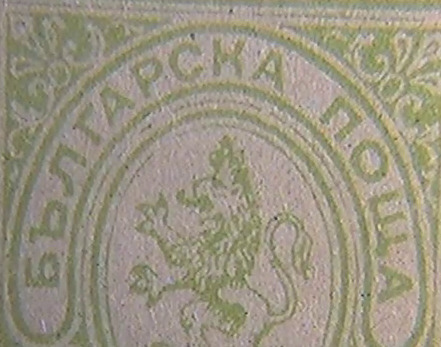
'But what even is a lettercard?' I can hear you whisper (Ok maybe that's a bit too quiet). Well a lettercard is a... card folded in half with a stamp, sealed at the edges, usually with a perforated edge so the recipient can open the letter card more easily. The message is written on the inside, and because it's folded in half, it has twice the writing space as a postal card while being the same size (after being folded), and It has an extra layer of privacy because y'know, random people can't just read it? Well the lettercard was invented by a Hungarian named Akin Karoly, and the first lettercard was issued by Belgium in 1882, blah blah blah let's talk about something more interesting, Like letters!
most of you probably can't read cyrillic, so I'll explain it quickly: Imagine the latin alphabet, are you imagining it? Good, now change a few letters like [L -> Л] and [B -> Б], and keep a few random letters the same like [T] and [K], and swap a few letters around just for fun like the letter [H] looks like an "h" right? Well it makes the same sound as "n" and [B] looks like a "b" right, well screw you, it's "v".
But I'm sure most of you know what cyrillic looks like. But did you know there're a lot of old letters noone uses anymore? They're pretty weird like [Ѳ] or [Ѡ] or even [Ѯ], pretty funny right? (The first one is called fita and make the F sound, the second one is omega, and was only used when transcribing Greek into cyrillic, and the last one is Ksi also used for transcribing Greek, and writing some last names). When I was looking at the back of this lettercard, I say two letters that aren't used anymore, the letters I say were Big Yus [Ѫ] and Yat [Ѣ] (Highlighted in yellow)
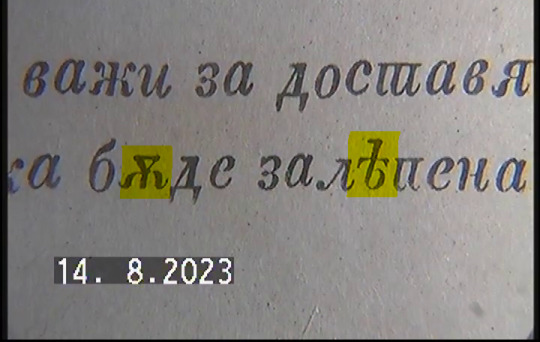
When I first say it I thought: 'wait, didn't they stop using Big Yus in the 1700s?' but then I remembered Bulgarian alphabet had Ѫ and Ѣ until 1945, When the orthography was reformed to simplify spelling, because by then Ѫ was pronounced the same as Ъ, which is pronounced similar to the "u" in but /bʌ̘t/. Originally Ѫ was pronounced as a nasal "a", but the only (largely spoken) slavic language which still has the nasal a is Polish, where it's written [ą] (here's how it's pronounced). 'But, if there's a Big Yus, is there also a Little yus?' you might be asking, the answer is... yes! There is a little yus and it looks like this [Ѧ] (It's pronunciation is a nasal "e", like the polish [ę]). Oh wait I forgot about Ѣ, (In Bulgarian) is pronounced like "Yah" (or Ja in German), in Russian It's pronounced like the e in bed, which was replaced in 1918 with [e] in most circumstances [копѣйка -> копейка (Kopeck)] and with ё in other ones.
Here's the full transcript in Ye Olden Bulgarian, Modern Bulgarian, and English (The English translation isn't the best but I did my best because Bulgarian is kind of similar to Slovenian):
Тая карта бажу за доставяне достажяние и въ странство ако иотрѣбнама доиълнителна марка бѫде залѣйена до оная отйагатана вьрхъ настоящата карта
2. Тая карта бажу за доставяне достажяние и въ странство ако иотребнама доиълнителна марка бъде залейена до оная отйагатана вьрхъ настоящата карта
3. This card is valid for domestic mail, for delivery abroad please attach an additional stamp in addition to the one already printed on this card.
I'm also a bit confused, because this is writting in italics, and the italic form of Yat [ѣ] is [ѣ], but they still wrote it like the non-italic version. I guess it's just a stylistic decision
But basically the text on the back is "This card is only for domestic mail, if you want to send it abroad, add another stamp"
Now let's stop talking about one sentence of text, and let's start talking about the rest of the lettercard. It was probably issued in the 1890s because the stamp on the card was issued from 1889 'till 1896 so, that's where I got the "1890s" date from (Fun fact: The nickname for the 1890s is the "gay 90s" haha funny), also I can tell this card was issued for domestic mail, and not just because of the text on the back that literally says "This card is for domestic mail, not international mail, Bich!", I can tell because the Indicium is Green, because in the 1880s the General Postal Union (Now called the Universal Postal Union) decided to standardize the color-scheme of all stamps (Green=Domestic Postcard, Red=Domestic Letter/International Postcard, Blue=International letter) and most countries used these colors until the 1940-60s, so if you see a postal card from before the 1960s look at the color of the stamp!
Ok enough talking Here's the cover!


3 notes
·
View notes
Text
Cover of the day: Day 18: 1940s Postwar British-Germany Envelope
IM BACK BITKHES, AND I FEEL BETTER THAT EVER (Sorry for not posting for a while, first I was quite sick, then Slovenia had the worst natural disaster of the decade, and like a few months of rain fell in 12 hours, so... that's not good, but luckily my town didn't flood, so I'm fine).
Also I just bought a bunch of covers so expect some good posts over the next few weeks (7 of the 14 covers have arrived), and this is the first cover of the batch
---
Today's cover was sent... sometime in the 1940s (Probably in 1946) on the 28th of some month (February or April) from Cologne (Köln), British Zone of Germany to Chicago, Illinois.
'Wait what? British zone of Germany???' I can hear you scream.Well, The British zone of Germany (AKA The British occupation zone in Germany AKA Britische Besatzungszone Deutschlands) was one of the Allied-occupied areas of Germany after the Allied Victory of World War 2, Germany was divided between America, Britain, France, The Soviet Union, and Poland (The Polish and Part of the Soviet zones were annexed into Poland and the Soviet Union), Which eventually left 4 Occupation zones in (Modern-day) Germany (the American, British, French, and Soviet zones), The borders of these zones were decided at the Potsdam Conference:
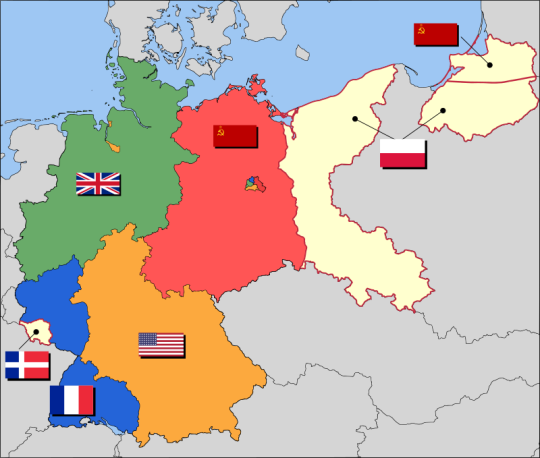
You may be wondering: 'What's that weird country east of the French zone with the weird nordic-cross flag', Well; In February 1946, The French decided to disentangle the Saar from the Allied zones of occupation and established the separate Saar Protectorate, which was de facto no longer under the joint Allied jurisdiction. Saarland was officially established on the 17th of December 1947 (Because it is technically a different country, it doesn't count here). After a referendum in 1955, Saarland officially became a state of West Germany (The Federal Republic of Germany) in 1957. Ok Now back to Germany
On the 1st of January 1947 the British and American occupation zones were combined into the Bizone (Haha get it? 'Cause there's 2 of them), later on the 1st of August of 1948 the French occupation zone was added to the Bizone, turning it into the Trizone (Haha get it? 'Cause there's 3 of them). Later of the 23rd of May 1949, the trizone was renamed to the Federal Republic of Germany (Commonly known as West Germany or Bundesrepublik Deutschland in German).
But the Soviet zone stayed independent, eventually becoming the German Democratic Republic (Deutsche Demokratische Republik) in 1949 as a Soviet Puppet state and member of the Warsaw Pact (I'll talk about the DDR in a later post because I have a lot of Interesting DDR Covers). Well in 1989 the Berlin wall fell, and finally in 1990 the DDR and the BRD unified into the... BRD (It stayed the BRD, They didn't change the name)(That's the same Germany that we all know and love today).
What were we talking about? Oh yeah the cover. Well The stamp on the Cover is a 75 Pfennig stamp issued for all the allied zones issued in 1946. After the creation of the Bizone the stamps were overprinted with different patterns of Posthorns:
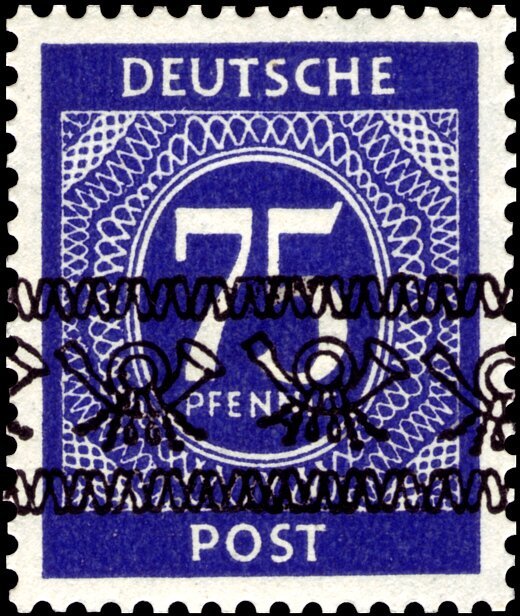
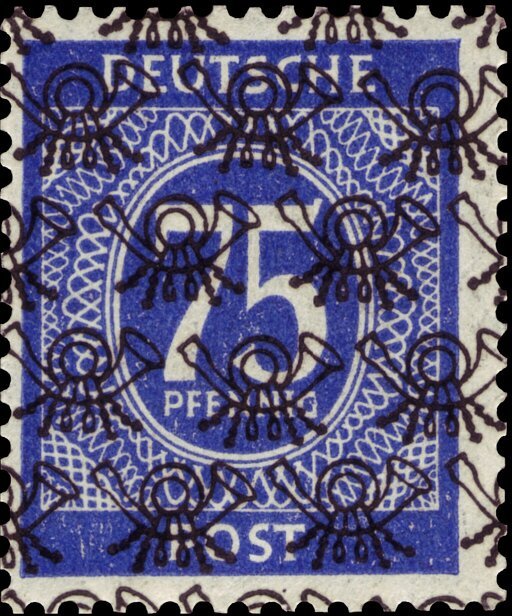
The un-overprinted stamps were valid until the 22nd of June 1948 in the trizone, and until 31st of July 1948 in the Soviet zone. Though the Overprinted stamps were only valid for a few more months (Until the 19th of September 1948) than the non-overprinted stamps.
This cover was sent from Cologne or Köln, one of the largest cities in Germany (Having a population of about 1.1 million). During the 2nd World war over 44,923.2 tons of bombs were dropped Cologne destroying about 61% of the city, and by the beginning of 1945 the population of the city had decreased by about 95%, but by the end of 1945 it had increased to about 450,000, so that's good I guess.
'BUT If Cologne is called Köln in German, Why does it say Koeln on the back?!' I can hear you scream (Please stop screaming), well; if you can't write the letter [ö] instead write [oe], the same applies for all umlauts (Umlauts are the two little dots on top of the letter) [ä -> ae][ü -> ue]. But... why do they write these letters with the little dots, if the letter has an umlaut, it's pronounced in the front of the mouth (Like the english [man ~ men] which with umlauts would be written as [man ~ män]), 'but why do they write these letters with the little dots?' I can hear you scream (Please I beg you, stop yelling), (with the help of a little thing I quickly made in gimp) well in ye olden days, if they wanted to umlaut-ize a vowel they just added an e at the end, but because Germans are weird in their cursive they wrote an [e] as two vertical lines, and because it was ye olden days and movable-type printing wasn't invented yet (in Europe) medieval scribes had A LOT of abbreviations, so they decided to write the [e] on top of the vowel, and because of the weird German cursive, it looked like two vertical lines, which was eventually simplified into two dots. A similer thing happened with [ao] and [uo] some scribes decided to simplify the [o] into a circle, which eventually became the Swedish/ Dano-Norwegian/ Sami/ Greenlandic letter [å] and Czech letter [ů]

Now let's go back to the cover: I really like how it looks, there's just something nice about it, maybe it's the sloppy address, clearly written with a bad fountain pen, or maybe it's just it's history
Anyways, Here's the cover!
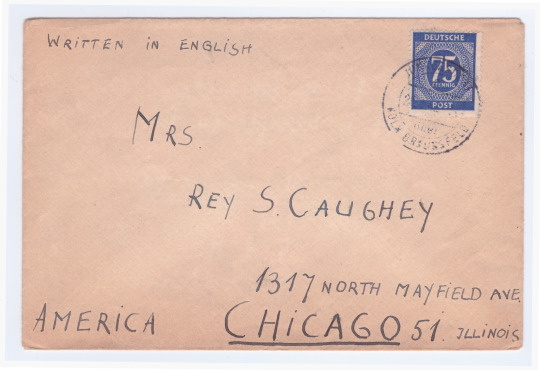

Again, sorry for not posting for a while
#hotduck.gif#covers#cotd#philately#is this how tags work#germany#post war#im back#help lol#ok bye now#see you tomorrow
0 notes
Text
I still feel very sick, so I'll stop posting until I feel better, sorry
0 notes
Text
Cover of the day: Day 17: 1890-93 Austrian Mint Postal Card
Hello again! I'm slowly running out of interesting covers to post, that doesnt mean I don't have any more, I'll have to go dig out more from the box in my closet. I also just bought a few more (interesting) covers from E-Bay so expect some better covers in a few weeks!
---
Today's cover was sent... (You already know what I'm talking about so I'll just skip to the interesting bits) It was issued somewhere between 1890 and 1893(When The Austrohungarian Empire switched from the Gulden or Florin to the Krone), By The Austrian Empire specifically for use in Slovenia (Then called Carniolia), I can tell this because it says "Slov." on the bottom and its in German and Slovene.
The Indicium has a value of 2 Austrian Kreuzers (1/50th of a Gulden/Florin), and a portrait of then emperor Franz Joseph I (1848-1916).
I also have a different mint Austrian postal card in Slovenian from the 1880s
I don't have anything else to say, so here's the cover.


#covers#hotduck.gif#cotd#postal stationary#is this how tags work#oh hell yeah#austia#austro hungarian empire#i hate the summer#farewell
0 notes
Text
Cover of the day: Day 16: Airmail stationery from Soviet Latvia
I'm sorry I'm late again. I'm also sorry that I'm posting another Soviet envelope, I have too many.
Also I'm still sick.
---
I'll make this quick. This cover was sent on the 9th of May 1960, from Riga, Latvia to Detroit, Michigan. The indicium has a value of 1.60 (old/fourth) Rubles.
'Wait, what were old rubles', I can hear you scream. Well in 1961 the Soviet Ruble was redenominated 10:1 (1 New Ruble = 10 Old Rubles), because (With the old ruble) 10 kopecks were the smallest practical unit used, so they just chopped one zero off. Though the postal rates remained relatively the same: 30/3 kopecks for a postcard, 40/4 kopecks for a letter, 60/6 kopecks for a domestic airmail letter, and 1.60 rubles/16 kopecks for an international airmail letter (This is the rate used here).
Another strange thing I noticed on this cover is the postmark. A normal Soviet postmark of the era looks something like this:

It has hammer & sickle in a star with the word "CCCP" on the top, and the town name on the bottom in russian (Postmarks from Latvia/Lithuania/Estonia would have the town name in Russian and Latvian/Lithuanian/Estonian and would also have the name of the Soviet Republic), and the date in the center. But this covers postmark has the town name on the top (RĪGA) and "Latvian SSR" on the bottom in French, I don't know why it's in French, oh and I forgot... the date in the center.
Ok that's enough talking, here's the cover:


#covers#philately#hotduck.gif#is this how tags work#oh hell yeah#duck#cotd#am i doing tumblr right#ok#goodbye
0 notes
Text
Cover of the day: Day 15: Mint 19th century Montenegrin postal card
I still feel sick, so this post is also a bit late (I usually post at about 00:30 CEST, but it's 16:00 CEST), don't ask me why I always post at around midnight (My sleep schedule is a bit borked)
---
Today's cover was sent... nev... oh yeah, I'm not doing that anymore! Ok, I'll try again; Today I have a mint cover to show you! I'm not sure exactly when it was issued, sometime in the late 19th or early 20th century, It was issued by Montenegro, that I'm sure of.
People often forget Montenegro was an independent country before 2006 (including me). So here's a quick recap: First there was the Prince-Bishopric of Montenegro (1516–1852), then there was the Principality of Montenegro (1852–1910), then the Kingdom of Montenegro (1910–1918), in 1918 it was unified with Serbia, then they formed the Kingdom of Serbs, Croats, and Slovenes (Later Yugoslavia). Then in 2006 they became independent again. THE END.
The indicium is the same design as a stamp issued from 1874-1893, with a value of 2 novi-kreuzer, Montenegro used the Austrohungarian gulden until 1893 and the Austrohungarian Krone until 1906 (When they got their own currency, the Montenegrin Perper). The stamp features the portrait of Prince (Later King) Nicholas I of Montenegro (Montenegro was a principality from 1852-1910, then in became a kingdom in 1910).
All of the printed text on the postal card is in Montenegrin (Serbian) and French, 'Why French?', you may be wondering, well that's because until the 1920s or 30s had to have all text in the countries official language and in French, so foreign postal workers could sort mail more effectively (French was and still is the official language of the Universal Postal Union). The most common example of this are airmail labels (They all also say 'Par Avion')
Here are some examples:

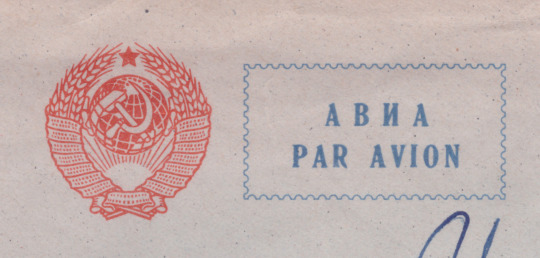
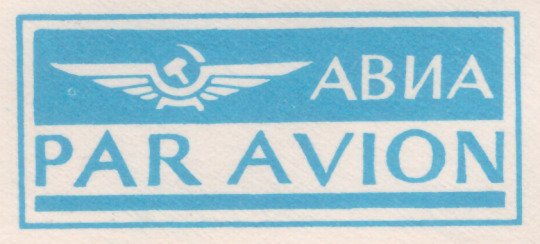


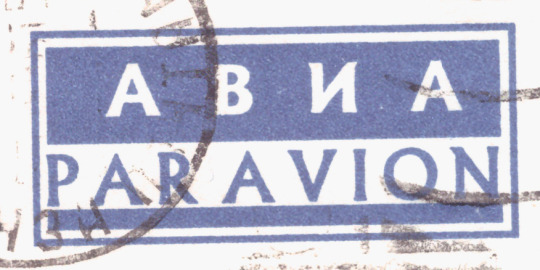
See? They're all also in French.
Enough talking about French, Here's the cover!

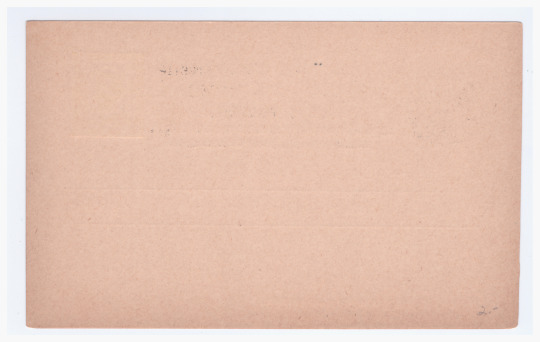
See that it also says 'Union postale universelle' on the top? That's 'Universal Postal Union' in French (But you could already figure that out)
#covers#cotd#hotduck.gif#is this how tags work#montenegro#postal stationary#how do tags work#is this enough tags
0 notes